For their sixth Slow Art Day The Art Gallery of Ontario, Canada, invited the public to look slowly at five artworks, accompanied by prompts, via their Instagram Story:
- Canaletto, ‘The Bacino di San Marco, from the Piazzetta‘, c. 1735.
- Barbara Hepworth, ‘Two Figures’, 1943.
- Claude Monet, ‘Charing Cross Bridge, brouillard‘, 1902.
- Claes Oldenburg, ‘Ice Cream Soda with Cookie‘, 1963.
- Daphne Odjig, ‘Odjig Family: Father, Grandmother, Stanley, Daphne, Donald, Winnie, Xmas, Dec 25th‘, 1986.
Re-Live the Experience
Below are some excerpts from the original prompts from the Instagram Stories. Why not take a moment to look at each painting to learn a little about the artists and re-live the Art Gallery of Ontario slow art experience?
Canaletto
Figurative paintings like Canaletto’s The Bacino di San Marco, from the Piazzetta are good starting points for close looking. Notice the groups of figures, the gondolas waiting for passengers, the person looking over the balcony down at the square. By looking more slowly, you may get a sense of what a typical day in Venice looked like in the 18th century. They probably didn’t have dolphins around then either….
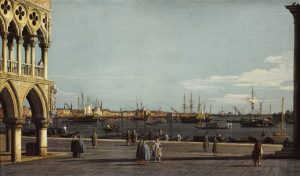
Hepworth
Hepworth practiced direct carving, which means the artist tried to respect the nature of the material, working to bring out its particular characteristics. What do the vertical forms and the dynamics between them suggest? It’s easy to imagine the forms standing in for humans. What conversation might they be having?
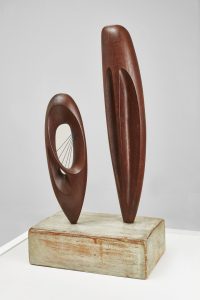
Monet
Imagine you could walk into this painting. What would it feel like? What would it smell like? Monet was particularly interested by the effects of fog. He painted over 37 versions of this scene, trying to capture the changes in light and ambience. Have you ever done something over and over again? How does repetition change your experience? Malcolm Gladwell, a Canadian author, famously estimates that it takes 10,000 hours to master a skill. And hey, there is no shortage of time right now…
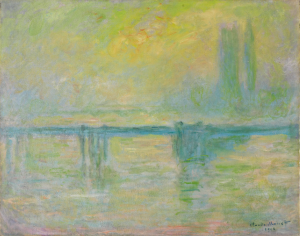
Oldenburg
Claes Oldenburg sketched food and merchandise displayed in shops in the lower east side of New York and created a series of exhibitions related to the theme of a store between 1963-1967. Nothing was irrelevant, everything could be art. There is definitely a focus on foodie culture lately, especially with more time to be in the kitchen. What is your comfort food? If you were an artist, what kind of food would you immortalize in sculpture?
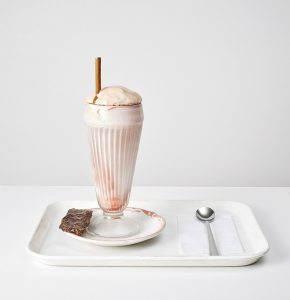
Odjig
Odjig, Canadian First Nations artist from the Odawa-Potawatomi nation, uses a graphic style to portray her immediate family during her childhood in Wikwemikong. This artwork shares her first artistic influences – her family. In particular, her grandfather taught her to paint and draw. On sketching excursions, he taught her the stories of her ancestors and the use of the curvilinear design. What better way to depict family connections. How would you represent your family?
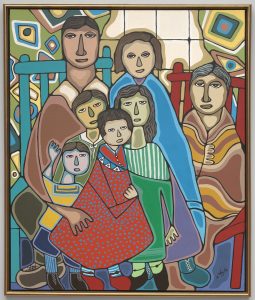
In addition to the Instagram event, a post of Monet’s ‘Charing Cross Bridge‘ was also shared to the museum’s Facebook account which was liked 400+ times, and shared by 170 viewers. It was accompanied by general guidelines for slow looking, such as:
- Get comfortable…
- Take your time. Look at the texture, colour, shape, symbols, story, and perspective.
- Pay attention to how your mind and body respond.”
We are delighted to see museums like The Art Gallery of Ontario rise to the challenge of involving people in slow looking in their own homes. When we started Slow Art Day 10 years ago, we primarily wanted museums to use the web in the service of sending more people into real spaces. Due to Covid19 lockdown restrictions this year, however, most museums had no choice but to rely on virtual platforms, and it is wonderful to see events such as this one still producing amazing engagement with art.
We hope to see yet another wonderful event for Slow Art Day at The Art Gallery of Ontario next year.
– Johanna
